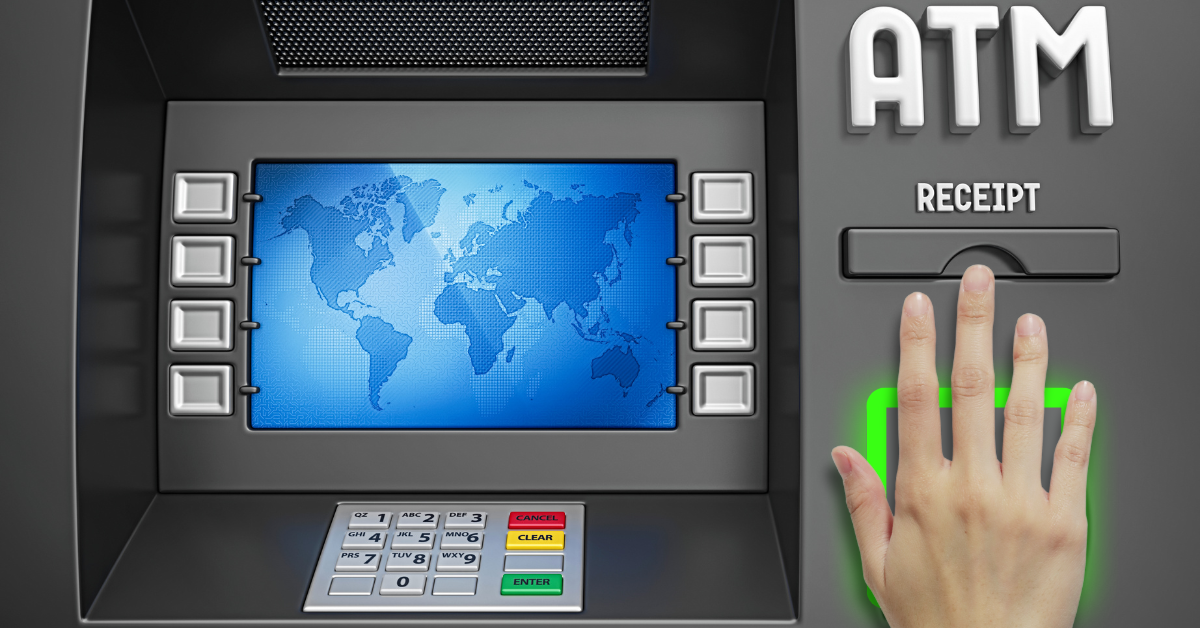Categories
ATM fraud continues to challenge financial institutions globally, undermining customer trust and causing significant losses. Palm vein recognition, a cutting-edge biometric technology, offers a robust solution by authenticating users through their unique palm vein patterns.
This article explores the mechanics of Palm Vein Banking, its benefits, Japan’s leadership in its adoption, its potential in retail payments, and its role in shaping secure banking in 2025.

Palm Vein scanning utilizes advanced biometrics to secure ATM transactions by scanning the intricate vein patterns beneath a user’s skin. These internal patterns, captured using near-infrared light, are highly unique and nearly impossible to replicate, surpassing the security of traditional card-and-PIN systems.
At an ATM, customers simply hover their palm over a scanner, which compares the vein map to a pre-registered template stored securely on a server or smart card. This contactless process authenticates users swiftly, enabling card-free transactions with enhanced safety and convenience.
Implementing Palm Vein scanning at ATMs delivers transformative benefits for banks and their customers, redefining security and usability.
Palm vein patterns are internal, making them virtually unforgeable. This reduces ATM fraud risks, such as card skimming, by a reported 60% in 2024 trials [Source: Banking Security Digest].
Authentication completes in under 2 seconds, streamlining transactions and reducing wait times, even during high-traffic periods at ATMs.
Customers can access accounts without cards or IDs, ensuring financial access during crises like natural disasters or lost wallets.
The intuitive, contactless scanning process enhances user satisfaction, offering a seamless experience for all age groups.
Japan has led the world in adopting palm vein scanning for banking, integrating this biometric technology into its banking infrastructure to combat fraud and enhance customer experience.
Since the mid-2000s, Japanese banks have embraced Palm Vein Banking to address rising ATM fraud, including counterfeit cards and stolen PINs.
This early adoption aligned with Japan’s “Society 5.0” vision, which promotes secure, technology-driven solutions for a connected society, establishing the country as a global benchmark for biometric banking.

Japanese ATMs equipped with palm vein scanners feature a multi-step authentication process. Customers enroll their palm vein patterns at a bank branch, where the data is encrypted and stored on a smart card or secure server. At the ATM, they input a personal identifier (like a birthdate), scan their palm using a near-infrared scanner, and enter a PIN.
The scanner verifies the vein pattern against the stored template, ensuring only authorized access. This layered approach balances security with user-friendliness.
Beyond ATMs, palm vein scanning has proven its value in Japan. During the 2011 Tohoku earthquake, customers who lost their bank cards accessed funds via palm scans, demonstrating the technology’s resilience in emergencies. Rural banks have adopted it to serve remote areas, providing secure banking without extensive infrastructure.
Japan’s smart city initiatives, like those in Osaka, are exploring palm vein authentication for public transport and secure building access, showcasing its potential in a hyper-connected future.
Palm Vein Banking extends its security benefits to retail payments, transforming point-of-sale (POS) transactions. By integrating palm vein scanners into POS machines, customers can pay with a quick palm scan, eliminating the need for cards and reducing fraud risks like skimming.
This contactless payment method enhances checkout efficiency and hygiene, appealing to post-pandemic consumer preferences. For retailers, Palm Vein Banking offers a secure, scalable solution that integrates with existing POS systems, paving the way for a unified financial ecosystem in 2025.
Palm Vein Banking is poised to redefine ATM and payment security in 2025, offering a fraud-resistant, user-friendly alternative to traditional methods. Japan’s pioneering adoption highlights its reliability, from thwarting fraud to enabling access in crises, while its expansion into retail payments underscores its versatility. As global banks and merchants adopt Palm Vein Banking, it promises to create a safer, more trusted financial landscape, ensuring seamless and secure transactions for customers worldwide.